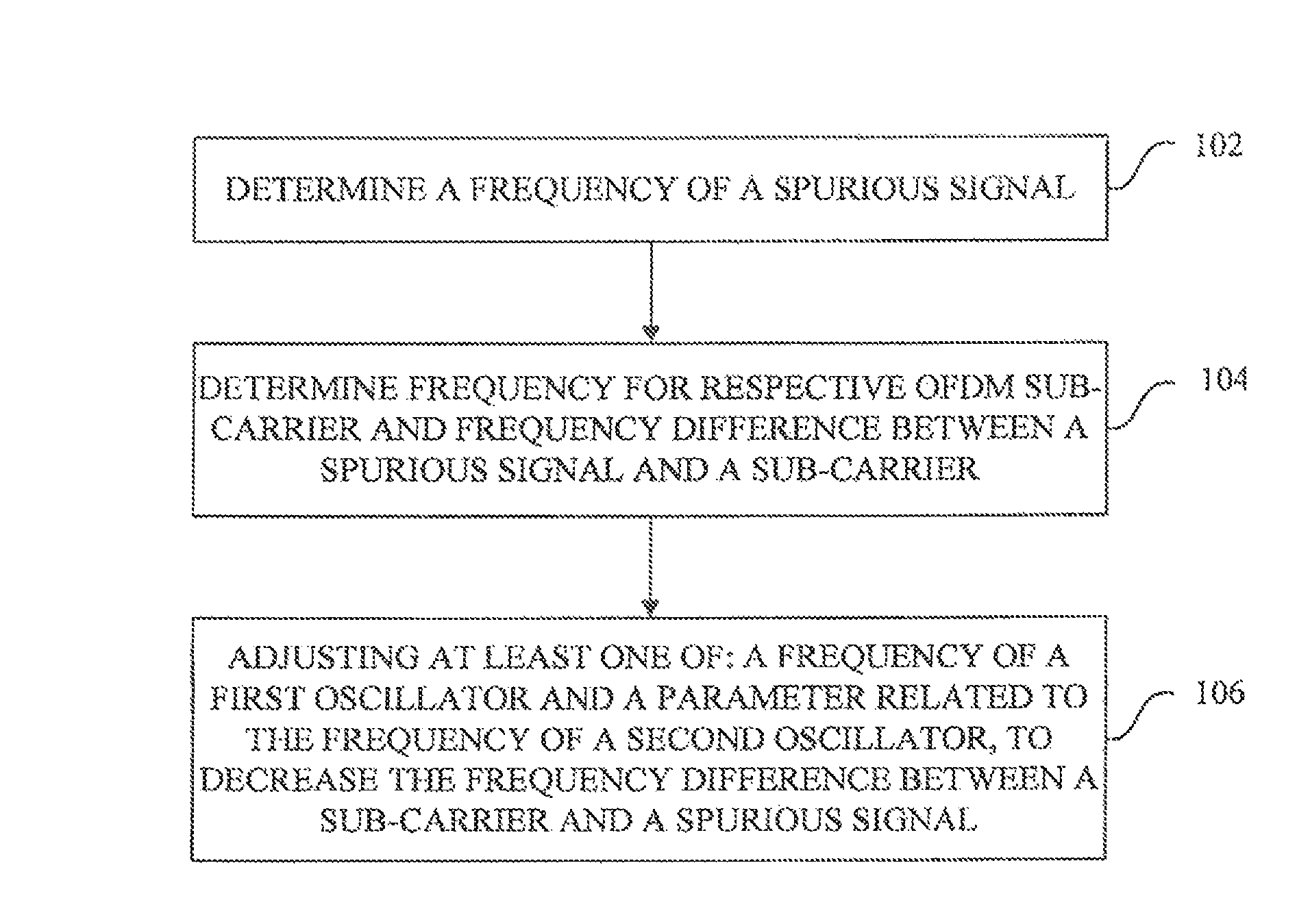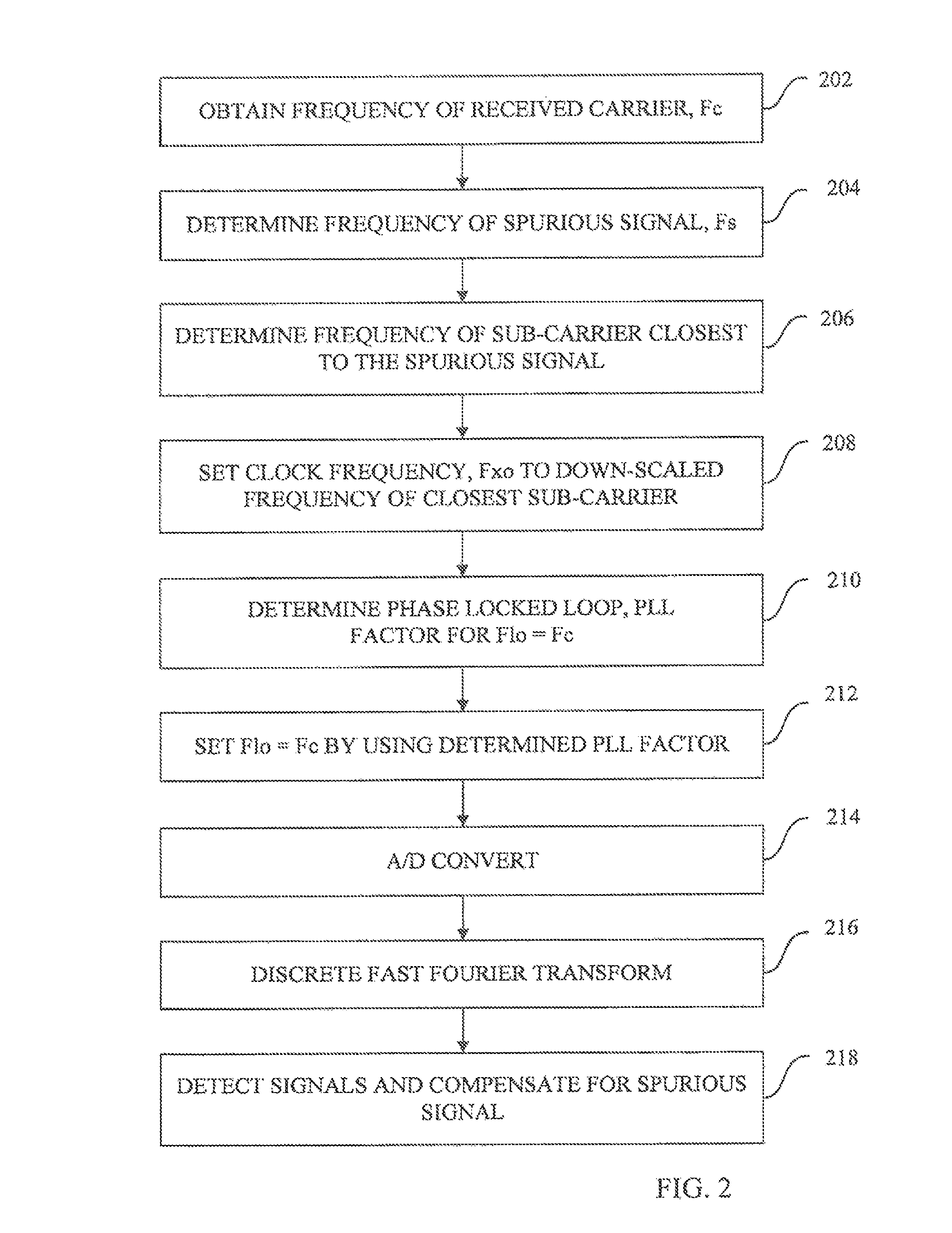Methods and receiver for positioning of clock related spurious signals
- Summary
- Abstract
- Description
- Claims
- Application Information
AI Technical Summary
Benefits of technology
Problems solved by technology
Method used
Image
Examples
first embodiment
[0034]Within a first embodiment, adaptation of the frequency of both the internally generated clock signal as well a parameter in the Phase Locked Loop, PLL transforming the frequency of a clock signal to a Local Oscillator, LO carrier frequency, is performed. In this embodiment, the spurious signal originating from the clock signal is translated to a frequency corresponding to a sub-carrier frequency.
second embodiment
[0035]Within the present invention, adaptation is performed of either an internally generated clock signal or the LO carrier frequency by at maximum half the sub-carrier spacing at radio frequency and a digital frequency compensator that is introduced to compensate for a LO offset.
[0036]Within the two mentioned embodiments suppression of spurious signals is performed in a subsequent base band processing, for instance, by either setting soft values on the affected sub-carrier to zero (so called nulling), or by estimation and subsequent subtraction of spurious signals. It shall be mentioned that suppression is not limited by the two mentioned methods. Rather other methods may just as well be applied.
[0037]It can also be mentioned that a signal having a frequency F is distributed over different frequency bins, when transformed by a Fast Fourier Transform, FFT of a certain dimension. The closer F is to a certain carrier frequency, the fewer sub-carriers are affected.
[0038]Thus, performa...
PUM
 Login to View More
Login to View More Abstract
Description
Claims
Application Information
 Login to View More
Login to View More - R&D
- Intellectual Property
- Life Sciences
- Materials
- Tech Scout
- Unparalleled Data Quality
- Higher Quality Content
- 60% Fewer Hallucinations
Browse by: Latest US Patents, China's latest patents, Technical Efficacy Thesaurus, Application Domain, Technology Topic, Popular Technical Reports.
© 2025 PatSnap. All rights reserved.Legal|Privacy policy|Modern Slavery Act Transparency Statement|Sitemap|About US| Contact US: help@patsnap.com



